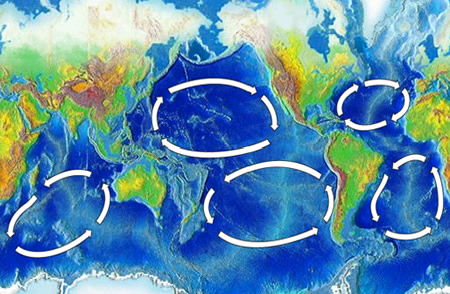I’ve heard stories over the years about “islands”, out in the middle of the oceans, which are created completely from discarded plastic. It’s hard to believe that such a place would exist. I recently watched the documentary, “Garbage Island”, by Vice. This documentary proved there is no such island, at least not in the terms of plastic patches so thick you could walk on them.
What is actually out there; 1,000 miles from any landmass, is much worse than a simple growing patch of used up plastic. There are vortexes, holding in tons of broken down plastic particles from the plastic that doesn’t sink (LDPE, HDPE). This plastic floats along the currents of the ocean, breaking down year after year from the sun and the salt water, ultimately finding its home in and around the slower currents of the gyres.
It would be relatively easy to scoop up all the large items of trash and clean up our oceans, but the small, usually microscopic, size pieces of plastic particles would be nearly impossible to clean up. All marine life has to live in an environment that is ultimately becoming toxic. They ingest the plastic particles and, in turn, we ingest the seafood.
How do we limit the amount of plastic that is ending up in our oceans? This isn’t a problem only confined to the United States, this is a worldwide problem. It’s not enough to just know where our plastic products are ending up, i.e. being recycled, landfill, etc. We should also be more aware of what types of plastics are being used and how their end of life is affecting our environment.
ENSO Plastics Restore is leading edge technology that gives plastic material biodegradability in landfills; and ENSO’s Renew resin will make plastic marine degradable. This is a solution that can solve the plastic pollution problem in our oceans. A solution that needs to addressed; because once the plastic is out of our hands, it’s up to nature to take care of the rest.


